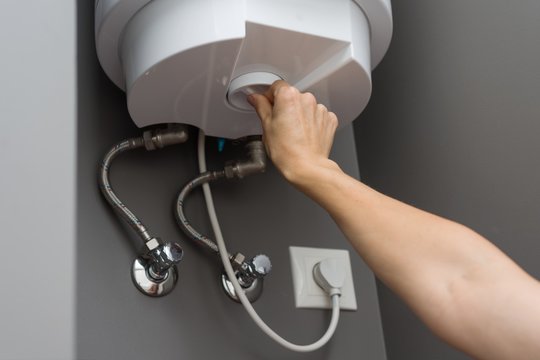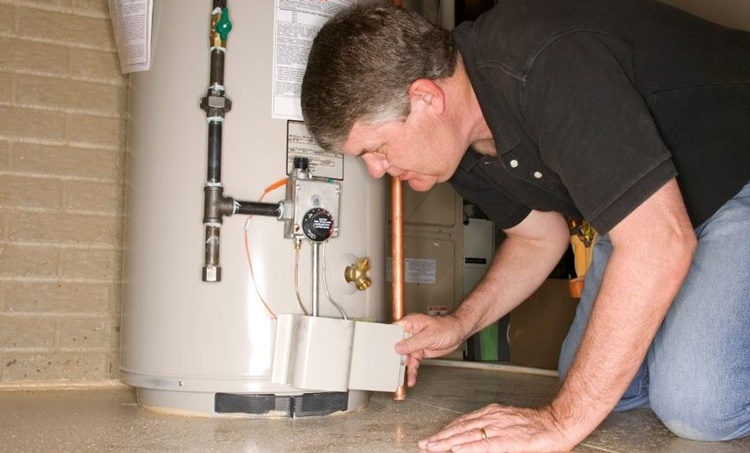Steps on How to Care for Your Home's Hot Water System ProperlyEssential Guidance on Maintaining Your Home's Hot Water SystemEssential Care Tips for Your Home's Hot Water System
Steps on How to Care for Your Home's Hot Water System ProperlyEssential Guidance on Maintaining Your Home's Hot Water SystemEssential Care Tips for Your Home's Hot Water System
Blog Article
The author is making a number of great points relating to Tips For Maintaining Your Hot Water Heater in general in this great article below.

Warm water is essential for everyday convenience, whether it's for a revitalizing shower or washing meals. To guarantee your hot water system runs effectively and lasts much longer, regular maintenance is crucial. This write-up provides useful pointers and insights on how to maintain your home's hot water system to prevent interruptions and pricey fixings.
Introduction
Preserving your home's hot water system may appear overwhelming, but with a few simple steps, you can ensure it operates smoothly for many years to find. This overview covers every little thing from recognizing your hot water system to DIY maintenance suggestions and knowing when to contact expert assistance.
Significance of Maintaining Your Hot Water System
Routine maintenance not just expands the life-span of your warm water system yet also ensures it operates efficiently. Neglecting maintenance can result in reduced performance, greater energy costs, and also premature failure of the system.
Indications Your Hot Water System Requirements Maintenance
Understanding when your hot water system needs focus can protect against significant concerns. Watch out for indicators such as irregular water temperature level, odd noises from the heater, or rusty water.
Purging the Water Heater
Flushing your hot water heater eliminates sediment buildup, boosting performance and extending its life.
Checking and Replacing Anode Rods
Anode poles prevent corrosion inside the container. Checking and replacing them when worn out is critical.
Complicated Issues Needing Professional Aid
Examples consist of significant leaks, electric issues, or if your hot water heater is consistently underperforming.
Regular Specialist Maintenance Benefits
Specialist maintenance can include detailed examinations, tune-ups, and making sure compliance with safety and security criteria.
Examining and Adjusting Temperature Level Setups
Changing the temperature level setups ensures optimum performance and safety.
DIY Tips for Upkeep
You can perform a number of maintenance tasks on your own to keep your warm water system in top condition.
Looking for Leaks
Regularly check pipes and connections for leakages, as these can result in water damage and greater costs.
Understanding Your Warm Water System
Prior to diving into maintenance jobs, it's practical to understand the fundamental parts of your hot water system. Usually, this consists of the water heater itself, pipes, anode rods, and temperature level controls.
Monthly Upkeep Tasks
Regular month-to-month checks can help catch small concerns before they intensify.
Checking Stress Relief Valves
Examining the stress relief valve ensures it works correctly and stops too much pressure buildup.
Protecting Pipes
Protecting warm water pipelines reduces heat loss and can save power.
When to Call an Expert
While DIY maintenance is valuable, some issues need expert expertise.
Conclusion
Routine upkeep of your home's warm water system is important for effectiveness, durability, and price savings. By adhering to these tips and recognizing when to look for specialist aid, you can guarantee a trustworthy supply of warm water without unexpected interruptions.
Water Heater Maintenance: The Basics
Maintaining your water heater will ensure it operates efficiently and has a longer lifespan. Neglecting regular maintenance can lead to costly repairs and an even bigger chunk of your savings if you have to replace it sooner than necessary. But there’s good news: Most water heater maintenance tasks are relatively simple and easy for homeowners with basic DIY skills.
Flush the Water Heater
Over time, sediment and minerals can build up in the tank, reducing its efficiency and potentially causing damage. To flush the tank, turn off the power or gas supply, attach a hose to the drain valve near the bottom and open the valve to drain the water until it runs clear. Ideally, flush the tank annually.
Replace the Anode Rod
The anode rod is a sacrificial metal rod that helps prevent corrosion inside the tank. Inspect and replace it every three to five years or per the manufacturer's recommendation. To replace the anode rod, turn off the power or gas supply, drain a few gallons of water from the tank, unscrew the old rod and replace it with a new one. If the anode rod is significantly corroded or covered in calcium buildup, it's a sign the water heater may need to be replaced soon.
Tune-Up
A yearly tune-up can help identify potential issues and ensure your water heater operates at peak efficiency. This typically involves checking the thermostat, burner assembly (for gas heaters) and any other components specified by the manufacturer. During a tune-up, the technician may also clean the burner and adjust the pilot light (for gas heaters) or examine the heating elements (for electric heaters).
How to Maintain Your Water Heater
Insulate the tank. Insulating the tank can improve energy efficiency and reduce heat loss, saving you money on energy bills. You can purchase precut insulation blankets designed specifically for water heaters or use standard fiberglass insulation wrapped securely around the tank. Check the temperature. The recommended water temperature for most households is around 120 degrees Fahrenheit (49 degrees Celsius). Higher temperatures can increase energy costs and potentially cause scalding. Use a kitchen thermometer to check the temperature at the faucet nearest the water heater. Monitor water pressure. Excessive water pressure can strain the water heater and cause leaks or even tank failure. Install a pressure-reducing valve if necessary. The ideal water pressure range is between 60 and 70 PSI (pounds per square inch). Test the temperature and pressure (T&P) relief valve. The T&P relief valve is a safety feature that releases pressure if the tank gets too hot or the pressure builds up too high. Test it annually by lifting the lever and allowing a small amount of water to release. Replace the valve if it doesn't release water or reseal properly. Check for leaks. Regularly inspect the tank, pipes and fittings for leaks or corrosion. Deal with issues promptly to prevent further damage. Even a small leak can lead to significant water damage over time. Consider a tankless water heater. If your traditional tank-style water heater is nearing the end of its lifespan ( typically 10 years), consider replacing it with a tankless water heater. These units heat water on demand, reducing standby energy losses and potentially saving you money on your energy bills. Schedule professional maintenance. While homeowners can perform many water heater maintenance tasks, it's still a good idea to schedule professional maintenance every few years. A plumber or HVAC technician can thoroughly inspect the unit, identify potential issues and ensure it operates safely and efficiently. https://www.homeserve.com/en-us/blog/home-improvement/hot-water-heater-maintanence/

Do you enjoy reading up on How to Maintain Your Water Heater & Prolong its Life? Try leaving feedback further down. We will be glad to hear your reactions about this entry. In hopes that you visit us again before long. Liked our article? Please quickly share it. Let someone else discover it. Thank you for going through it.
Free Quote Report this page